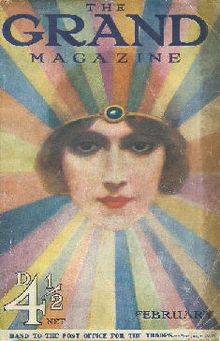
The Strand Magazine was a monthly British magazine founded by George Newnes, composed of short fiction and general interest articles. It was published in the United Kingdom from January 1891 to March 1950, running to 711 issues, though the first issue was on sale well before Christmas 1890. Its immediate popularity is evidenced by an initial sale of nearly 300,000. Sales increased in the early months, before settling down to a circulation of almost 500,000 copies a month, which lasted well into the 1930s.
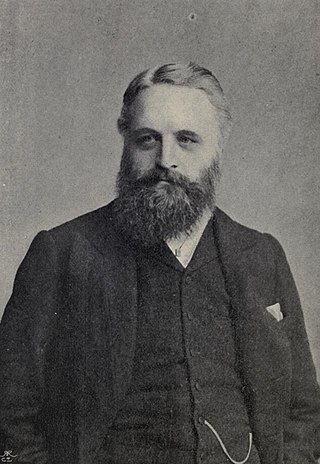
Sir George Newnes, 1st Baronet was a British publisher and editor and a founding figure in popular journalism. Newnes also served as a Liberal Party Member of Parliament for two decades. His company, George Newnes Ltd, was known for such periodicals as Tit-Bits and The Strand Magazine; it continued publishing consumer magazines such as Nova long after his death.

The American Mercury was an American magazine published from 1924 to 1981. It was founded as the brainchild of H. L. Mencken and drama critic George Jean Nathan. The magazine featured writing by some of the most important writers in the United States through the 1920s and 1930s.

My Man Jeeves is a collection of short stories by P. G. Wodehouse, first published in the United Kingdom in May 1919 by George Newnes. Of the eight stories in the collection, half feature the popular characters Jeeves and Bertie Wooster, while the others concern Reggie Pepper, an early prototype for Bertie Wooster.

Without a Clue is a 1988 British comedy film directed by Thom Eberhardt and starring Michael Caine and Ben Kingsley. It is based on Sir Arthur Conan Doyle's characters from the Sherlock Holmes stories but, in this version, the roles are reversed: Dr. John Watson is the brilliant detective, while "Sherlock Holmes" is an actor hired to pose as the detective so that Watson can protect his reputation as a physician.
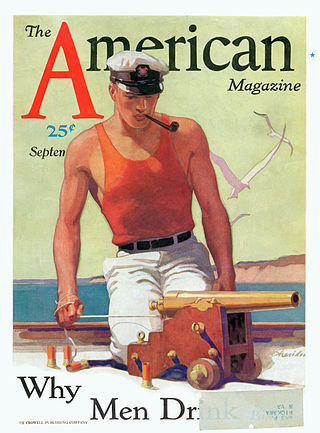
The American Magazine was a periodical publication founded in June 1906, a continuation of failed publications purchased a few years earlier from publishing mogul Miriam Leslie. It succeeded Frank Leslie's Popular Monthly (1876–1904), Leslie's Monthly Magazine (1904–1905), Leslie's Magazine (1905) and the American Illustrated Magazine (1905–1906). The magazine was published through August 1956.
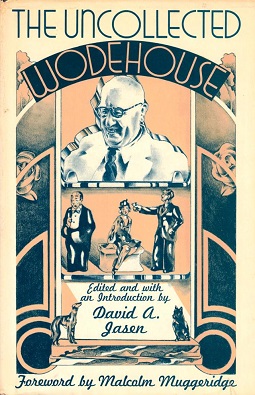
The Uncollected Wodehouse is a collection of early newspaper and magazine articles and short stories by P. G. Wodehouse. First published in the United States on 18 October 1976 by Seabury Press, New York City, it contains 14 short stories. Five of the stories had appeared in the United Kingdom in the 1914 collection The Man Upstairs, and all had previously appeared in UK periodicals between 1901 and 1915; some had also appeared in the U.S. Five short items are included from 1900–1906 UK magazines, ten from 1914–1919, and nine from the U.S. Vanity Fair magazine.

The Captain was a magazine featuring stories and articles for "boys and old boys", published monthly in the United Kingdom from 1899 to 1924. Its headquarters were in London. It is perhaps best known for printing many of P. G. Wodehouse's early school stories.
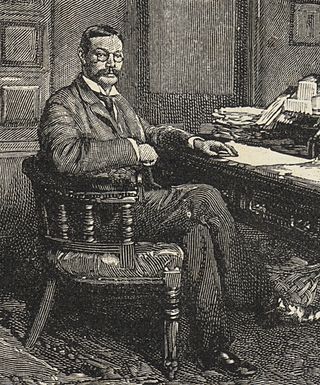
Herbert Greenhough Smith was the first editor of The Strand Magazine which published many of Arthur Conan Doyle's Sherlock Holmes stories. His active support and encouragement to Conan Doyle, and the magazine's vigorous promotion of the Sherlock Holmes character, had much to do with the character's success.

"The Story of the Lost Special", sometimes abbreviated to "The Lost Special", is a mystery short story by Arthur Conan Doyle first published in The Strand Magazine in August 1898. A minor character in the story is possibly implied to be Doyle's character Sherlock Holmes, though his name is not used and this character does not provide the mystery's solution. The story's narrative mode is third person, subjective, though the narrator is not identified.
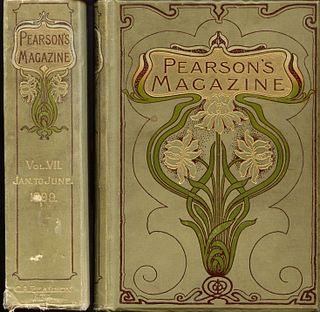
Pearson's Magazine was a monthly periodical that first appeared in Britain in 1896. A US version began publication in 1899. It specialised in speculative literature, political discussion, often of a socialist bent, and the arts. Its contributors included Bertram Fletcher Robinson, Upton Sinclair, George Bernard Shaw, Maxim Gorky, George Griffith, H. G. Wells, Rudyard Kipling, Rafael Sabatini, Sapper, Dornford Yates and E. Phillips Oppenheim, many of whose short stories and novelettes first saw publication in Pearson's.
Harry Rountree was a prolific illustrator working in England around the turn of the 20th century. Born in Auckland, New Zealand, he moved to London in 1901, when he was 23 years old.

Cassell's Magazine is a British magazine that was published monthly from 1897 to 1912. It was the successor to Cassell's Illustrated Family Paper, (1853–1867) becoming Cassell's Family Magazine in 1874, Cassell's Magazine in 1897, and, after 1912, Cassell's Magazine of Fiction.

Alfred Garth Jones (1872–1955) was an English artist and illustrator who worked mainly in woodcut, pen and ink line art drawing and watercolour.
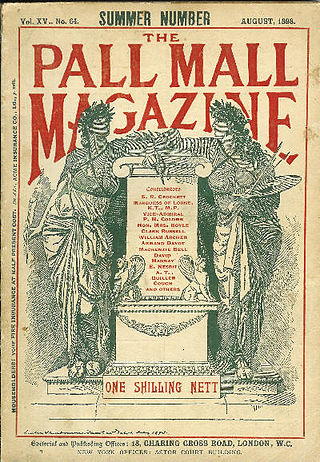
The Pall Mall Magazine was a monthly British literary magazine published between 1893 and 1914. Begun by William Waldorf Astor as an offshoot of The Pall Mall Gazette, the magazine included poetry, short stories, serialized fiction, and general commentaries, along with extensive artwork. It was notable in its time as the first British magazine to "publish illustrations in number and finish comparable to those of American periodicals of the same class" much of which was in the late Pre-Raphaelite style. It was often compared to the competing publication The Strand Magazine; many artists, such as illustrator Sidney Paget and author H. G. Wells, sold freelance work to both.

Fantasy was a British pulp science fiction magazine which published three issues in London between 1938 and 1939. The editor was T. Stanhope Sprigg; when the war started, he enlisted in the RAF and the magazine was closed down. The publisher, George Newnes Ltd, paid respectable rates, and as a result Sprigg was able to obtain some good quality material, including stories by John Wyndham, Eric Frank Russell, and John Russell Fearn.

George Newnes Ltd is a British publisher. The company was founded in 1891 by George Newnes (1851–1910), considered a founding father of popular journalism. Newnes published such magazines and periodicals as Tit-Bits, The Wide World Magazine, The Captain, The Strand Magazine, The Grand Magazine, John O'London's Weekly, Sunny Stories for Little Folk, Woman's Own, and the "Practical" line of magazines overseen by editor Frederick J. Camm. Long after the founder's death, Newnes was known for publishing ground-breaking consumer magazines such as Nova.

The Novel Magazine was the first British all-fiction pulp magazine. It was Sir Cyril Arthur Pearson's rival to Sir George Newnes's The Grand Magazine.

The Quiver (1861–1956) was a weekly magazine published by Cassell's and was "designed for the defence and promotion of biblical truth and the advance of religion in the homes of the people."
C. Arthur Pearson Ltd. was a British publisher of newspapers, periodicals, books, and comics that operated from 1890 to c. 1965. The company was founded by C. Arthur Pearson, later to be known as Sir Arthur Pearson, 1st Baronet.
